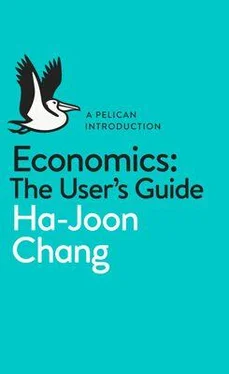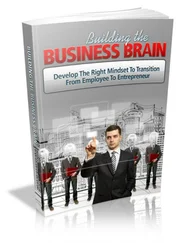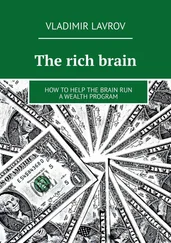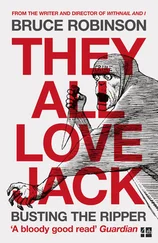Bruce Hood - The Domesticated Brain - A Pelican Introduction (Pelican Books)
Здесь есть возможность читать онлайн «Bruce Hood - The Domesticated Brain - A Pelican Introduction (Pelican Books)» весь текст электронной книги совершенно бесплатно (целиком полную версию без сокращений). В некоторых случаях можно слушать аудио, скачать через торрент в формате fb2 и присутствует краткое содержание. Год выпуска: 2014, ISBN: 2014, Издательство: Penguin Books Ltd, Жанр: Старинная литература, на английском языке. Описание произведения, (предисловие) а так же отзывы посетителей доступны на портале библиотеки ЛибКат.
- Название:The Domesticated Brain: A Pelican Introduction (Pelican Books)
- Автор:
- Издательство:Penguin Books Ltd
- Жанр:
- Год:2014
- ISBN:9780141974873
- Рейтинг книги:4 / 5. Голосов: 1
-
Избранное:Добавить в избранное
- Отзывы:
-
Ваша оценка:
- 80
- 1
- 2
- 3
- 4
- 5
The Domesticated Brain: A Pelican Introduction (Pelican Books): краткое содержание, описание и аннотация
Предлагаем к чтению аннотацию, описание, краткое содержание или предисловие (зависит от того, что написал сам автор книги «The Domesticated Brain: A Pelican Introduction (Pelican Books)»). Если вы не нашли необходимую информацию о книге — напишите в комментариях, мы постараемся отыскать её.
The Domesticated Brain: A Pelican Introduction (Pelican Books) — читать онлайн бесплатно полную книгу (весь текст) целиком
Ниже представлен текст книги, разбитый по страницам. Система сохранения места последней прочитанной страницы, позволяет с удобством читать онлайн бесплатно книгу «The Domesticated Brain: A Pelican Introduction (Pelican Books)», без необходимости каждый раз заново искать на чём Вы остановились. Поставьте закладку, и сможете в любой момент перейти на страницу, на которой закончили чтение.
Интервал:
Закладка:
Humans may be opportunists too, but all societies are held together by tacit assumptions of reciprocity and moral codes to prevent individuals taking advantage. These are the rules we abide by. Some of these codes are enshrined as laws. We enter into social contracts where we submit to authority or the state on the assumption that those who abide by the rules will benefit, whereas those who violate or break them will be punished. Members who benefit from these social arrangements do not even have to be family. Indeed, when you think about it, much human sharing of resources is altruistic – doing good deeds for the benefit of others who remain anonymous without necessarily benefiting ourselves.
No other animal on the planet behaves as altruistically as we humans do. Of course, there are some species, such as worker ants and bees, that make the ultimate sacrifice for the good of the nest or the hive when it comes under attack, but they do so because they are genetically closely related to those that benefit. Evolution has programmed their brains to be self-sacrificial. Humans are different. We cooperate with others because it makes us feel good. It is the thought of helping that is the reward, because we feel connected to the group. These feelings are the emotions that motivate us to be prosocial towards our fellow man (or woman) and fuel the drive towards altruistic collaboration, cooperation and ultimately human culture. However, we are not slavish drones that automatically bend over backwards to help anyone; we are always on the lookout for those who are trying to cheat the systems of reciprocity. We are inclined to lend a hand but we will seek retaliation if we believe we have been wronged. In order to make these sorts of decisions we have to have brains that are sophisticated enough to interpret others in terms of their motives, their goals and their affiliations.
What makes the human brain different?
For many animals, the problems of living long enough to reproduce were basic and immediate – how to navigate the world to find food, avoid harm and so on. Solitary animals figure these out for themselves because this is how they have evolved. Other animals that live in groups evolved the capability for coordination and cooperation for mutual benefit. For them, the environmental pressures they had to adapt to were not only physical, geographical or climate-based but also social. In a group, there would have been multiple potential mates competing to pass on their genes. This led to the evolution of social behaviours that increased the likelihood of successful breeding within a group.
This increase in social skills is considered one of the reasons that primate brains grew larger and why our species in particular have become the most skilled at interacting and learning from others. But then the human brain began to shrink again with the birth of large civilizations, when we started to live together more peacefully. It could be that humans went further than all other social animals by developing culture – the ability to communicate, to share ideas and knowledge, to engage in ritualistic symbolic activity and develop rules about how to behave for the benefit of the group. We had to learn to live together in greater harmony as our numbers started to increase. We needed to learn to become diplomatic. While physical environments tend to be static, social environments by comparison are constantly changing and providing considerable feedback, which in turn changes the dynamic of the interaction. In short, expertise in social interactions required considerable processing power and flexibility.
To enable humans to do this, we developed long childhoods to provide sufficient time and resources to ensure that our offspring were educated in the skills necessary for harmonious social living. Why else would humans have evolved into the species that spends the longest proportion of their lives dependent on adults? This amount of time was an evolutionarily big commitment for both parents and their offspring. With domestication came wisdom passed down the generations. We may have taught our own children some basics, but there was more to learn from the group. Our ability to communicate meant that our children could learn more about the world they needed to negotiate by listening to others without having to rediscover everything from first principles. But to benefit from that, the most critical knowledge they learned during childhood was how to be liked and valued by others – in other words, how to behave.

According to available records, the youngest child convicted and executed for a crime in England was John Dean, aged around eight years. He was hanged in Abingdon for setting fire to two barns in the nearby town of Windsor in 1629. At the time, the age of criminal responsibility was seven years, at which point children were considered to be little adults. Indeed, this is how they were often portrayed in paintings from that period.
In Van Dyck’s (1637) portrait of the children of Charles I, they look like miniature adults. Charles II, the boy in the painting, is only seven years old, yet he is shown with the posture of an adult, with feet crossed in a casual lean against the wall. The portrait reflects the prevailing attitude of the time that children simply lacked the wisdom of experience and that with training they would become acceptable to society. Like empty vessels, they needed to be filled up with information and instructed how to behave.
John Locke (1632–1704), the English philosopher, captured this view of the child as a blank canvas:
Let us then suppose the mind to be, as we say, white paper void of all characters without any ideas. How comes it to be furnished? Whence comes it by the vast store which the busy and boundless fancy of man has painted on it with an almost endless variety? Whence has it all the materials of reason and knowledge? To this I answer, in one word, from EXPERIENCE. 1
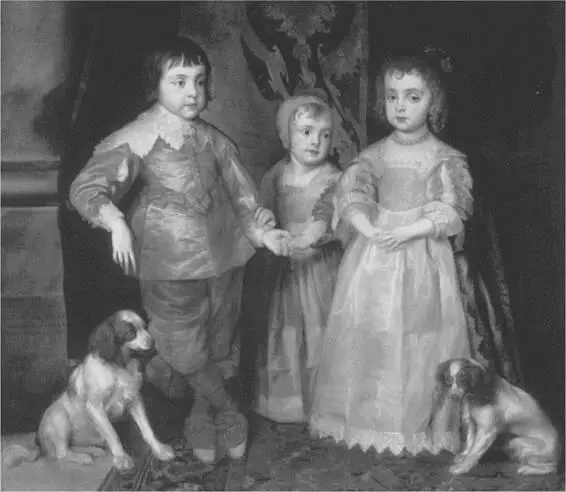
Figure 1: Children depicted as ‘Little Adults’
Locke described the infant’s mind as a ‘ tabula rasa ’ or blank slate. Not only was the infant’s mind considered empty, it was one that was faced with the daunting task of making sense of a complex and confusing new world of sensations and experience that the American psychologist William James would later describe in 1890 as a ‘blooming, buzzing confusion’. 2
However, Locke’s blank slate view is not plausible, nor is the newborn’s world completely confusing as James imagined. As the Prussian philosopher Immanuel Kant 3(1724–1804) pointed out, blank slates would not work unless they were already set up to detect the structures of the world. There has to be some organization built in in order to determine what constitutes a pattern in the first place. Consider how complicated vision would be without some pre-existing knowledge. You cannot begin to understand the world around you unless you have some inkling of what you are looking for. In order to perceive the world, you need to distinguish objects from backgrounds and determine where one object begins and another ends. We rarely consider these as problems because vision is so effortless. It is only when you try to build a machine that can see that the difficulty becomes all too obvious.
In 1966, Marvin Minsky, one of the pioneers of artificial intelligence, is said to have asked one of his undergraduate students at MIT to ‘spend the summer linking a camera to a computer and getting the computer to describe what it saw’. Presumably Minsky thought that the problem was easy enough that it should take the duration of a summer vacation for a student to solve. That was almost fifty years ago and thousands of professional scientists are still working on how to make machines see like humans.
Читать дальшеИнтервал:
Закладка:
Похожие книги на «The Domesticated Brain: A Pelican Introduction (Pelican Books)»
Представляем Вашему вниманию похожие книги на «The Domesticated Brain: A Pelican Introduction (Pelican Books)» списком для выбора. Мы отобрали схожую по названию и смыслу литературу в надежде предоставить читателям больше вариантов отыскать новые, интересные, ещё непрочитанные произведения.
Обсуждение, отзывы о книге «The Domesticated Brain: A Pelican Introduction (Pelican Books)» и просто собственные мнения читателей. Оставьте ваши комментарии, напишите, что Вы думаете о произведении, его смысле или главных героях. Укажите что конкретно понравилось, а что нет, и почему Вы так считаете.
